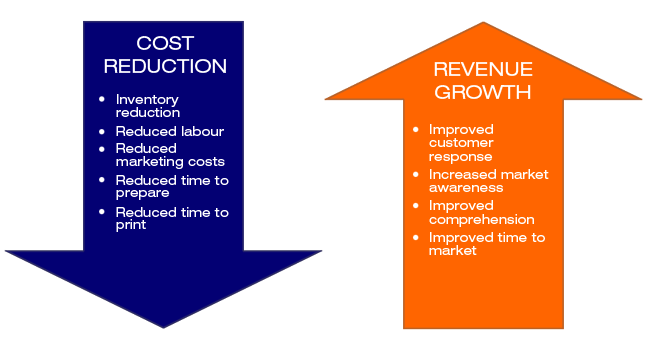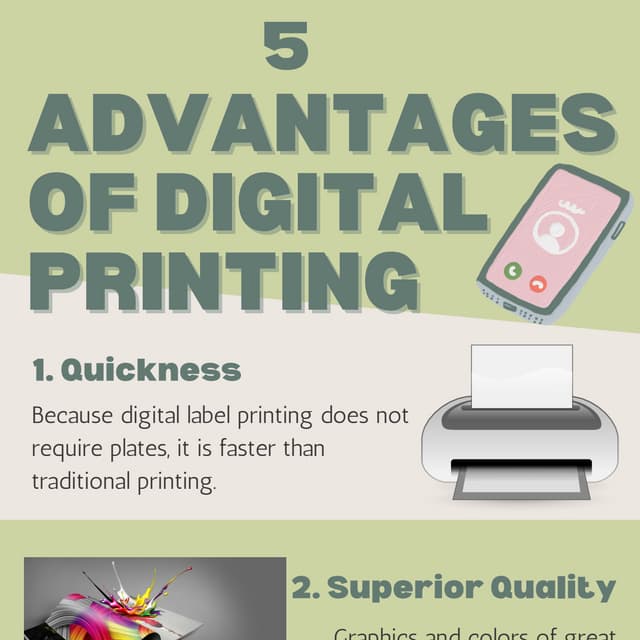The Single Strategy To Use For Digital Printing
The Single Strategy To Use For Digital Printing
Blog Article
Top Guidelines Of Digital Printing
Table of ContentsIndicators on Digital Printing You Need To KnowThe Only Guide for Digital PrintingThings about Digital Printing9 Easy Facts About Digital Printing DescribedThe Basic Principles Of Digital Printing Getting The Digital Printing To Work
Variable data printing, such as direct mail with individualized codes and addresses, is preferably fit for digital printing. Digital quick printing just requires 4 steps of layout, testimonial, printing and binding to obtain whatever done. Digital quick printing has an unmatched advantage: print on demand.According to PMMI, electronic printing allows brand names and producers to respond promptly to customer needs while enhancing the supply chain, lowering warehousing price and waste, and enjoying faster time to market. That all audios great, however how does this innovation do all that? The significant differentiator of these innovations is that there are no set up costs and no plates with digital printing.
The Digital Printing PDFs
According to Wikipedia, the best difference in between digital printing and typical approaches such as lithography, flexography, gravure, or letterpress - Digital Printing is that there is no demand to change printing plates in digital printing, whereas in these analog printing approaches the plates are repetitively changed. This causes quicker turnaround time and lowers cost when utilizing electronic printing.
Digital printing is very adaptable, so it's simple to make modifications to the bundle style swiftly. It all goes back to the plates.
With standard printing approaches, short-run printing is simply not feasible. Since a fantastic layout can make or break your product, electronic printing constantly creates high-grade, clear and vibrant graphics each time.
Digital printing is the procedure of printing digital-based pictures straight onto a range of media substrates. There is no demand for a printing plate, unlike with offset printing. Digital files such as PDFs or desktop publishing documents can be sent straight to the digital printing machine to publish on paper, image paper, canvas, material, synthetics, cardstock and various other substrates.
The Of Digital Printing
According to PMMI, digital printing allows brand names and producers to respond promptly to client needs while improving the supply chain, minimizing warehousing expense and waste, and appreciating faster time to market. That all sounds terrific, however how does this technology do all that? The significant differentiator of these modern technologies is that there are no set up charges and no plates with digital printing.
According to Wikipedia, the best distinction in between electronic printing and typical methods such as lithography, flexography, gravure, or letterpress is that there is no need to change printing plates in electronic printing, whereas in these analog printing approaches the plates are repetitively replaced. This leads to quicker turn-around time and reduces cost when utilizing electronic printing.

Some Known Incorrect Statements About Digital Printing
A lot more inventory can indicate more waste in the future. With conventional printing techniques, short-run printing is simply not feasible. Due to the fact that see it here a terrific design can make or damage your product, electronic printing continually develops high-grade, clear and vibrant graphics each time. Digital printing on flexible bags adds the bright, dynamic, and accurate graphics that almost beckon consumers to reach out and touch them.

According to PMMI, electronic printing enables brands and producers to react quickly to client needs while improving the supply chain, lowering warehousing cost and waste, and enjoying faster time to market. That all audios great, yet exactly how does this modern technology do all that? The significant differentiator of these technologies is that there are no set-up charges and no plates with electronic printing.
6 Easy Facts About Digital Printing Described
According to Wikipedia, the best distinction between electronic printing and typical methods such as lithography, flexography, gravure, or letterpress is that there is no requirement to replace you can look here printing plates in digital printing, whereas in these analog printing approaches the plates are continuously changed. This leads to quicker turnaround time and decreases expense when utilizing electronic printing.
Speedy manufacturing suggests obtaining your item to market much faster. It additionally suggests it's simpler and faster to make adjustments later on, when you alter a recipe, include a SKU, or develop seasonal product packaging. Digital printing is highly flexible, so it's easy to make adjustments to the plan layout promptly. All of it goes back to home plates.

Some Known Details About Digital Printing
Digital printing is the process of printing digital-based pictures directly onto a range of media substrates. There is no need for a printing plate, unlike with offset printing. Digital data such as PDFs or desktop publishing data can be sent out straight to the digital printing press to publish theoretically, picture paper, canvas, fabric, synthetics, click over here now cardstock and other substratums.
Report this page